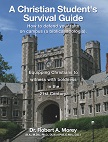By His Own Hand Upon Papyri: A Look at the Joseph Smith Papyri
By: John Morey
Mormonism is one of the most facts-dependent religions on the face of the earth. Most religious, such as Buddhism, cannot easily be verified or disproved by the archeologist's trowel. Buddhism must be fought entirely on a philosophical and theological playing field. Likely, the Jehovah's Witnesses must becombated based on their theology, even though it is very helpful to use empirical facts to discredit Charles Taze Russell and others.
Mormonism, however, depends entirely on the weight of archeological evidence. Joseph Smith told his followers very specific things about Native American culture before the land was colonized by Europe. If archeology unearthed absolute evidence that supports his claims, then Mormonism would have to be considered - if steel arrows, Jewish names, elephants, specific cities, references to King Noah, Moroni, Nephi, etc. were indeed discovered in America, this would be extremely significant - the information was of such a specific nature that either Joseph Smith found the original records, or he did not.
Aside from the assertions about Lamanite and Nephite culture in the Americas, which is covered in other books, there is also the issue of the infamous "Book of Abraham" manuscripts. As the story goes, in 1835 an Irishman brought his traveling show into Kirtland, which included four mummies and some papyri on display. At that point in history, Egyptian had not been translated into English, and thus one of Joseph Smith's more miraculous claims was the statement that he could translate Egyptian and a second heretofore unknown language called "Reformed Egyptian." Because of this, his disciples took great interest in the papyri on display and brought them to Joseph Smith for translation. Miraculously, he determined that these were fragments of the long-lost Book of Abraham, and fervently began to translate it. Although his translation remains incomplete, the Book of Abraham remains one of the most important sources of Mormon Doctrine. The original papyri were thought to be lost shortly after Joseph Smith's death, but in 1966 most of the original papyri were rediscovered in a vault.
By His Own Hand Upon Papyri: A Look at the Joseph Smith Papyri is an in-depth study of what the translated Papyri actually say. If his papyri are indeed the Book of Abraham, then this would be a massive victory for the Mormon Church. If, however, they say something completely different, then Joseph Smith’s credibility would be ruined. Since we now know how to properly translate Egyptian, the question is much more easily solved. By His Own Hand graciously includes full-color foldouts of the papyri fragments as well as images of Joseph Smith's sketches and photography of similar papyri that has been found in the past. These images are all accompanied by exhaustive diagrams that explain just what the reader is looking at.
As it turns out, the Joseph Smith Papyri are, in fact, fragments of the Egyptian Book of the Dead as well as other common Egyptian texts. The illustrations in the papyri have nothing to do with the supposed "Book of Abraham" at all. Joseph Smith had also made sketches of the papyri before they were lost, and an examination of these papyri show that not only are they parts of the Book of the Dead, but that it is incredibly obvious where he filled in missing segments of the manuscript - the same parts of the recently-found papyri that are smudged or torn beyond recognition.
Also included is Joseph Smith's guide to translating Egyptian, which proves nothing more than the fact that he didn't know Egyptian in the first place. A good portion near the end of the book consists of Mormon arguments concerning the now-translated papyri, and refutations of those arguments. This section is complete and exhaustive, clearly demonstrating that Mormonism really has nothing to argue with. Claims of a "hidden" or "double" meaning in the manuscripts are easily disproved, as are claims of a mnemonic device or even a hidden "missing scroll" that supposedly contains the real Book of Abraham.
By His Own Hand is very well-documented - which is necessary for a controversial work such as this. The writing style is clear and easy to understand, and this is not a boring or dry book in any way. The author is a former Mormon who has since converted to Christianity, which is made obvious when, in the last chapter, he includes a Gospel message. While it is a very good thing to preach the Gospel whenever and wherever possible, this last chapter has a few slight problems in that it makes the logical leap of, "Mormonism is false, therefore Christianity must be true!" Disproving your opponent does not prove your own position, and this final chapter could be seen as cheapening the rest of the book if not viewed properly. When viewed as a simple statement of the author's beliefs rather than a full dissertation like the rest of the book, however, it is perfectly all right. It also sufficiently answers the question, "Is Mormonism Christian?"
By His Own Hand Upon Papyri is an incredibly useful book in the fight against Mormonism, and without a shadow of a doubt refutes the Book of Abraham's historicity - and, in the process, completelydestroys Joseph Smith's credibility. It does so using scholarship and evidence that leaves no room for alternate interpretations. This book is highly recommended for anyone who plans to witness to Mormons or teach others about the religion.






































